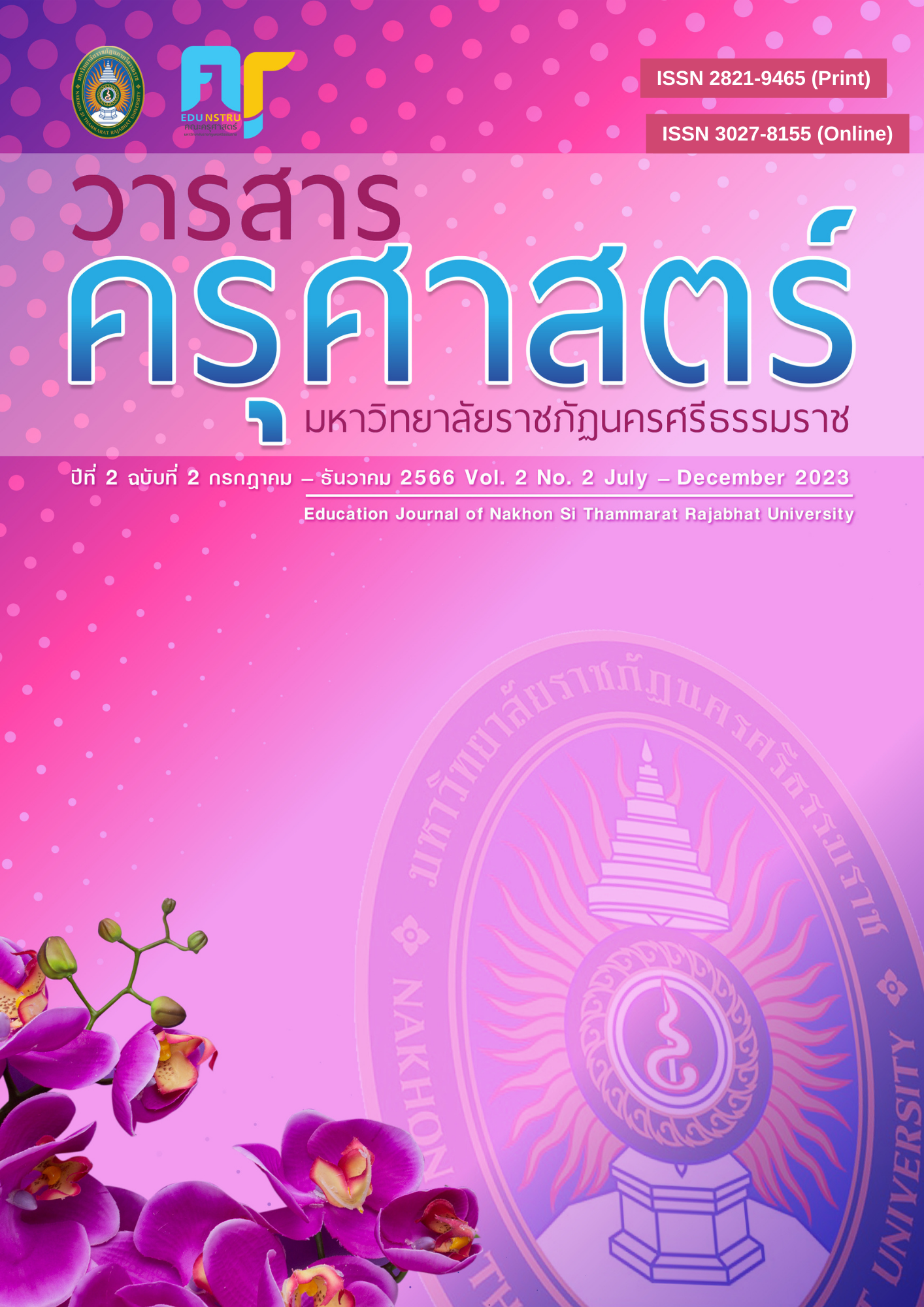The Development of Mathematic Learning Management by Using Cooperative Learning Team Games Tournament Technique (TGT) with Instructional Package on Division for Prathomsuksa 2 Students
Main Article Content
Abstract
This purposes of this study conducted in the form of Research and Development (R&D) were 1) to develop and find the efficiency of Instructional Package by using the cooperative learning Team Games Tournament Technique (TGT) with the activity package on division which meets the effective criteria of 80/80, 2) to experiment the application of Mathematics learning management by using the cooperative learning Team Games Tournament Technique (TGT) with the activity package on division, and 3) to evaluate the students’ satisfaction towards learning through mathematics learning management by using the cooperative learning Team Games Tournament Technique (TGT) with the activity package on division. The sample selected by means of cluster random sampling was 44 Prathomsuksa 2 students of Salameechai Municipality School studying in the second semester in 2022 educational year. The instruments used in this study were 1) lesson plans, 2) Instructional Package on division, 3) learning achievement test, and 4) a set of questionnaire on satisfaction. The data were analyzed by these statistical devices: percentage, standard deviation and t-test.
The results of the study were : 1) the Mathematics learning management by using the cooperative learning Team Games Tournament Technique (TGT) with the activity package on division met the effective criteria of 85.10/84.89, 2) the students’ learning proficiency after studying through Mathematics learning management by using the cooperative learning TGT technique with the activity package on division was significantly higher than that before studying at the .05 level, and 3) the satisfaction of students towards studying through Mathematics learning management by using the cooperative learning Team Games Tournament Technique (TGT) with the activity package on division as a whole was at the highest level ( =4.64)
Article Details

This work is licensed under a Creative Commons Attribution-NonCommercial-NoDerivatives 4.0 International License.
บทความที่ได้รับการตีพิมพ์เป็นลิขสิทธิ์ของวารสารครุศาตร์ มหาวิทยาลัยราชภัฏนครศรีธรราช
ข้อความที่ปรากฏในบทความแต่ละเรื่องในวารสารวิชาการเล่มนี้เป็นความคิดเห็นส่วนตัวของผู้เขียนแต่ละท่านไม่เกี่ยวข้องกับวารสารครุศาสตร์ มหาวิทยาลัยราชภัฏนครศรีธรรมราช
References
กระทรวงศึกษาธิการ. (2560). ตัวชี้วัดและหลักสูตรแกนกลาง กลุ่มสาระการเรียนรู้คณิตศาสตร์ (ฉบับปรับปรุง พ.ศ. 2560) ตามหลักสูตรแกนกลางการศึกษาขั้นพื้นฐาน พุทธศักราช 2551. สำนักคณะกรรมการศึกษาขั้นพื้นฐานกระทรวงศึกษาธิการ, กรุงเทพฯ : โรงพิมพชุมนุมสหกรณ์การเกษตรแหงประเทศไทย จำกัด
คณาจารย์กลุ่มสาระการเรียนรู้คณิตศาสตร์ โรงเรียนสาธิตจุฬาลงกรณ์มหาวิทยาลัย ฝ่ายประถม (2552). สาระน่ารู้สำหรับครูคณิตศาสตร์ รวมบทความประสบการณ์สอน. กรุงเทพฯ : สำนักพิมพ์แห่งจุฬาลงกรณ์ราชวิทยาลัย.
ชัยวัฒน์ สุทธิรัตน์. (2552). 80นวัตกรรมการจัดการเรียนรู้ที่เน้นผู้เรียนเป็นสำคัญ. กรุงเทพฯ : แดเน็กซ์อินเตอร์คอร์ปอเรชั่นจำกัด.
มยุรี เรืองศรีมั่น. (2553). การเปรียบเทียบผลสัมฤทธิ์ทางการเรียนวิชาคณิตศาสตร์เรื่อง เศษส่วนของนักเรียน ชั้นประถมศึกษาปี ที่ 6 โดยการจัดกิจกรรมการเรียนรู้ แบบ TGT กับการจัดกิจกรรมการเรียนรู้แบบปกติ. (วิทยานิพนธ์มหาบัณฑิต ไม่ได้ตีพิมพ์). มหาวิทยาลัยราชภัฏมหาสารคาม.
วิมลรัตน์ สุนทรโรจน์. (2554). การออกแบบการจัดการเรียนรู้ตามแนวคิดแบบ Backward Design. มหาสารคาม: ภาควิชาหลักสูตรและการสอน คณะศึกษาศาสตร์ มหาวิทยาลัย มหาสารคาม.
สุคนธ์ สินธพานนท์. (2553). นวัตกรรมการเรียนการสอนเพื่อพัฒนาคุณภาพของเยาวชน. พิมพ์ครั้งที่: 2. กรุงเทพฯ : โรงพิมพ์ 9119 เทนนิคพริ้นติ้ง.
สำนักงานคณะกรรมการการศึกษาแห่งชาติ. (2553). พระราชบัญญัติการศึกษาแห่งชาติพ.ศ.2542 และที่แก้ไขเพิ่มเติม (ฉบับที่3) พ.ศ. 2553. กรุงเทพฯ : สำนักนายกรัฐมนตรี.
อารีรัตน์ ศิริ. (2552). การศึกษาผลสัมฤทธิ์ทางการเรียนและความคงทนของการเรียนรู้ ทางคณิตศาสตร์โดยใช้รูปแบบการเรียนรู้แบบ TGT เรื่อง เศษส่วน ของนักเรียนชั้นมัธยมศึกษาปีที่ 1 โรงเรียนชุมชนวัดศรีดงเย็น สำนักงานเขตพื้นที่การศึกษา เชียงใหม่ เขต 3. (วิทยานิพนธ์มหาบัณฑิต ไม่ได้ตีพิมพ์).มหาวิทยาลัยราชภัฏเชียงราย.


